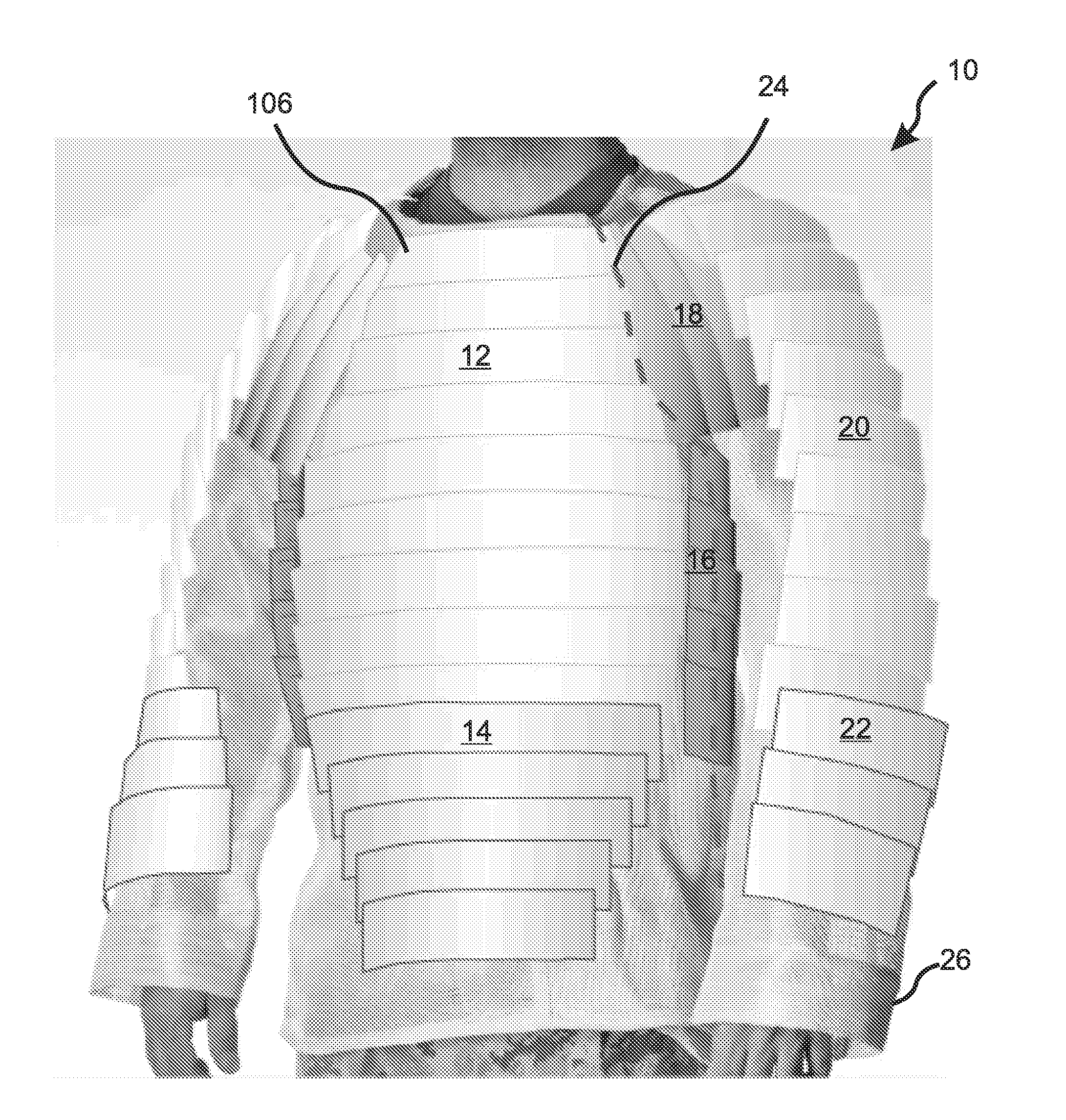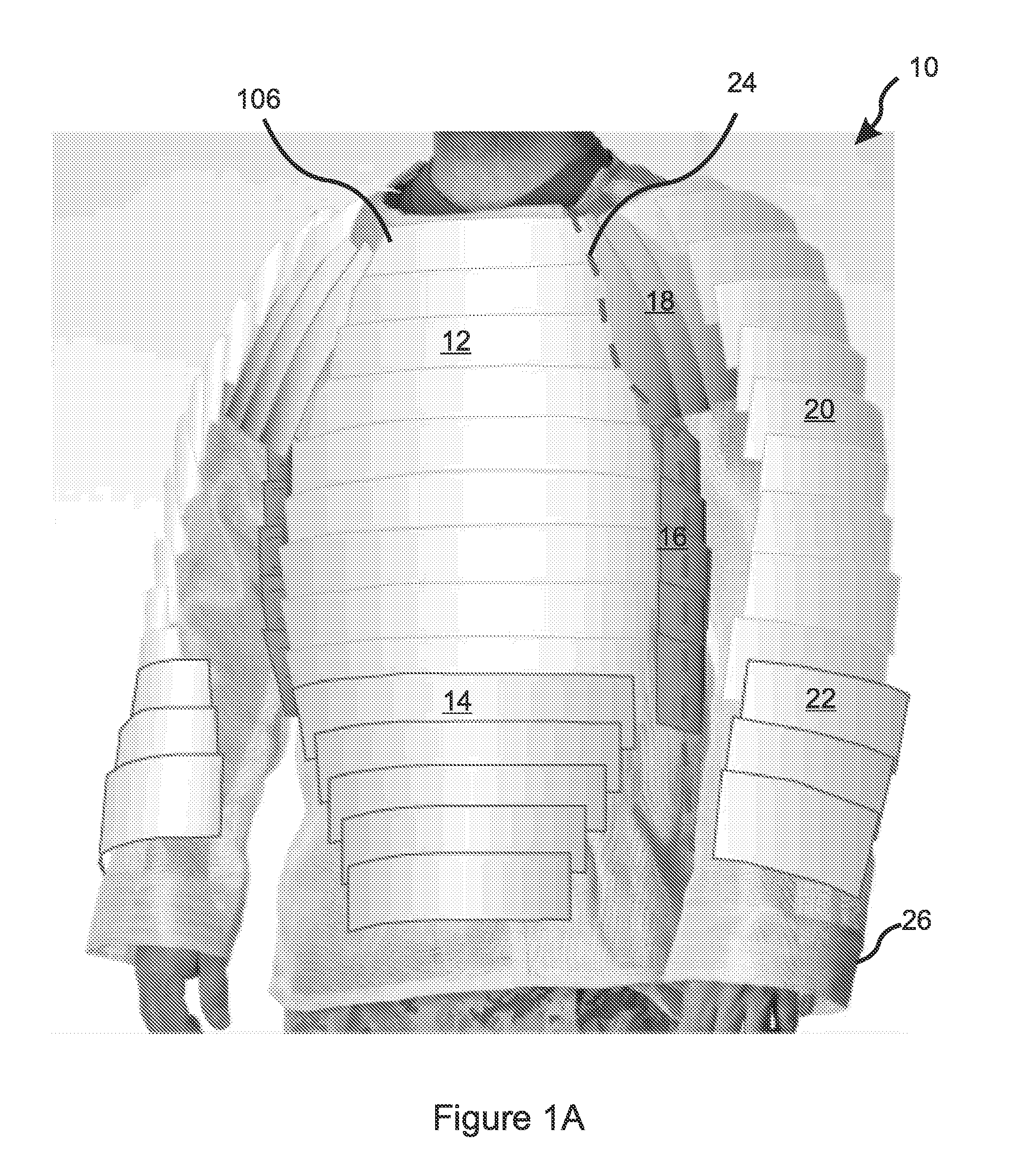Thermally vented body armor
a body armor and venting technology, applied in the field of body armor, can solve the problems of reducing the ability of one person to perform the mission effectively, reducing the efficiency of the mission, and wasting mass, so as to improve the mechanical stability of the mesh and reduce the waste of mass
- Summary
- Abstract
- Description
- Claims
- Application Information
AI Technical Summary
Benefits of technology
Problems solved by technology
Method used
Image
Examples
Embodiment Construction
[0051]With reference to FIG. 1A, the present invention combines “Thermal Vented Armor” (“TVA”) panels 12, 14, 16, 18, 20, 22 of various sizes and shapes so as to form a complete, modular, field-configurable protective armor system 10. In the embodiment of FIG. 1A, the TVA panels 12, 14, 16, 18, 20, 22 cover the upper chest 12, lower chest 14, lower side 16, upper side 18, upper arms 20, and lower arms 22. An openable closure 24 is provided as part of the assembled armor system, so as to enable a user to readily put the armor on and take it off without assistance, including the extremity protection sections 20, 22.
[0052]Note that in the embodiment of FIG. 1A the protective cards 106 of the TVA panels 12, 14, 16, 18, 20, 22 are not individually attached to mesh layers. Instead, they are assembled into the TVA panels 12, 14, 16, 18, 20, 22 by sewing, attachment to mesh strips, and / or by other means known in the art. In the illustrated embodiment, hook-and-loop attachment strips are use...
PUM
 Login to View More
Login to View More Abstract
Description
Claims
Application Information
 Login to View More
Login to View More - R&D
- Intellectual Property
- Life Sciences
- Materials
- Tech Scout
- Unparalleled Data Quality
- Higher Quality Content
- 60% Fewer Hallucinations
Browse by: Latest US Patents, China's latest patents, Technical Efficacy Thesaurus, Application Domain, Technology Topic, Popular Technical Reports.
© 2025 PatSnap. All rights reserved.Legal|Privacy policy|Modern Slavery Act Transparency Statement|Sitemap|About US| Contact US: help@patsnap.com



